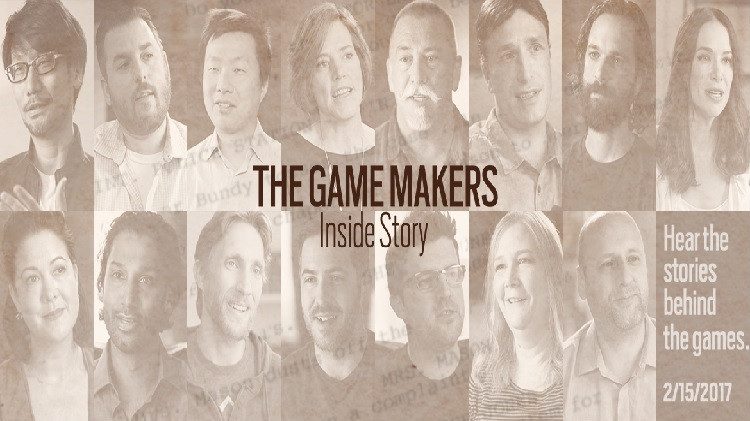Just in time for the Dice Summit on February 22nd, the Academy of Interactive Arts and Sciences brings fans The Game Makers: Inside Story, a special ten-part documentary series celebrating the last decade of spectacular video games. Fifteen of the industries best are interviewed to discuss the creative process behind their work, inspiring a new generation of storytellers.
This group of individuals includes many of PlayStation’s most notable contributors such as Amy Hennig (Uncharted), Hideo Kojima (Death Stranding), Will Byles (Until Dawn), David Cage (Detroit: Become Human), and many more!
This series is broken down into ten different parts, each of which interviewing developers to give a bit of insight behind their techniques in making the games we all enjoy.
Story Development
The first episode of the series covers how members of the best studios tackle story development in their game. With narrative driven games becoming more popular, developers in the documentary acknowledge that there are certain stories that are best told through games rather than other media. The interactivity that games provide can not be matched by what a person can merely watch onscreen from a movie.
Virtual and Augmented Reality
The new technology used in VR and AR give developers new opportunities to engage with their audience. In part eight, Will Byles mentions how this technology is an easy way to experience narrative transport, or the feeling of being transported into a story. Kiki Wolfkill of 343 Industries speaks briefly here about the immersive experience that players can almost feel rather than have to narrate through VR.
Social Themes
There are plenty of instances where a video game will handle a subject that players can either relate to or sympathize with, most often parallel to a social theme or issue. In part nine of the documentary, developers discuss how they try to incorporate these social topics for players in their game. When players are faced with a tough choice at a point in the story, their most reactionary decision often mirrors how the player might respond toward the issue in real life. Even if the player will never engage in this particular scenario, their choice reflects their actual selves in a similar way
The Future of Interactive Stories
The final part of this series discusses the future of interactive stories and developers interviewed seemed to be excited about where storytelling in video games are headed. With endless stories to be told and so many possible perspectives, there is no limit to what games could be developed in the future. Amy Hennig mentions how she hopes to see more diversity in how games are presented as well.
The beauty about video games, as mentioned in the documentary, is that this medium gives people the chance to interact and experience scenarios and stories that they otherwise would not in real life.
That said, I believe that Mary DeMarle closed this documentary perfectly saying that a combination of a good story and a good game will help us discover more about ourselves and how we feel about things.
If you want to learn more about the developmental process behind some of your favorite games, visit the Academy of Interactive Arts & Sciences website to watch the full documentary series.





